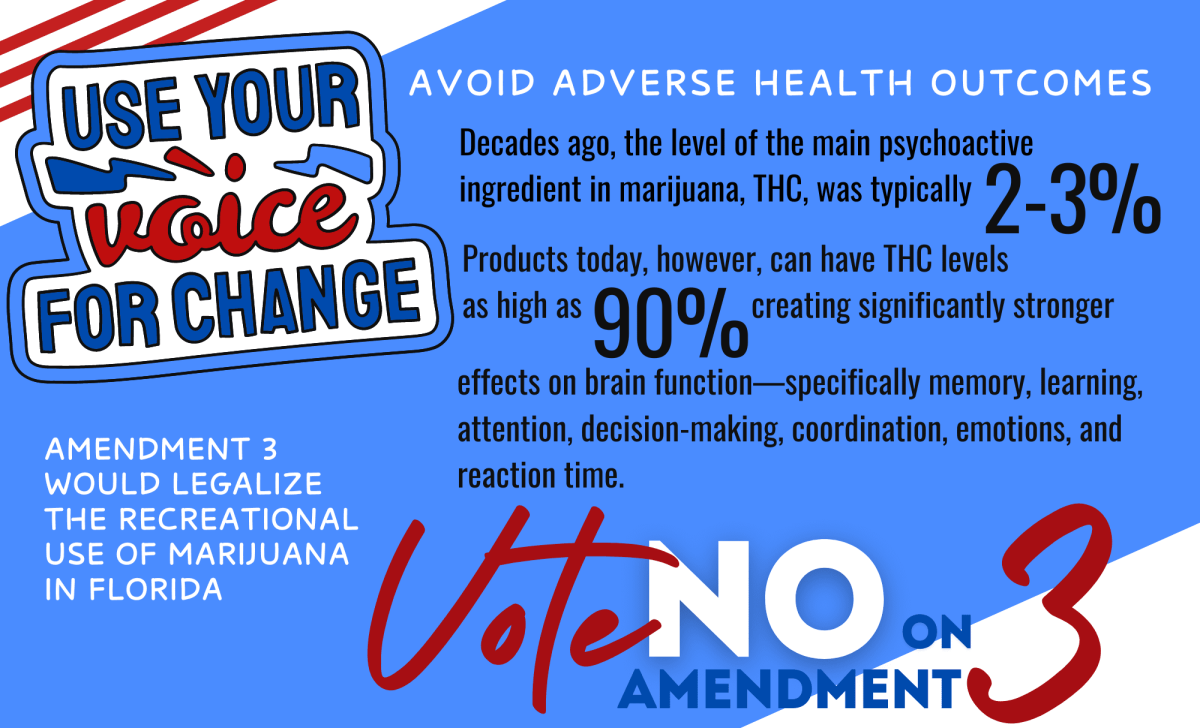Amendment 3 in Florida calls for the legalization for adults 21 and older to purchase and possess marijuana for non-medical use.
If passed, Florida would become the 25th state to legalize marijuana, meaning half of the states in the US would have already legalized it. The potential of the legalization has people worried for an increase in “stoned” driving, children inadvertently accessing and overdosing mistaking the candied form known as gummies, and more emergency room visits.
”I think that Amendment 3 will only further Florida’s downward slide as we will see an overconsumption and corruption among our neighborhoods and friends. More people will be out on the streets because of addiction problems, our environment will constantly smell terribly everywhere since people will be vaping it, and we also run the risk of even now people driving high and therefore causing more accidents. More connections, networking and friendships will be damaged by this,” said sophomore Isabella Limardo.
Voting “no” to the amendment goes against the legalization of marijuana whereas voting “yes” supports the legalization of it.
According to an article appearing in The Florida Catholic, The Florida Conference of Catholic Bishops are encouraging Floridians to vote “no” on Amendment 3, to prevent increased addiction to marijuana and adverse health outcomes for our communities.
Voting No on Amendment 3 will ensure that the recreational use of marijuana remains illegal for all Floridians.
Legalizing marijuana makes it more accessible, removes the criminal penalties and stigma attributable to it, and creates the impression that it is safe to use. Taken together, these factors ultimately lead to increased use of the drug—by as much as 20% in adults.
According to the U.S. Centers for Disease Control and Prevention, people who use marijuana have almost a 10% likelihood of becoming addicted, with that risk increasing in people who use marijuana frequently or start using it during youth or adolescence. Marijuana use among young adults is already at an all-time high, with10% using it daily and almost 50% using it within the last year.









